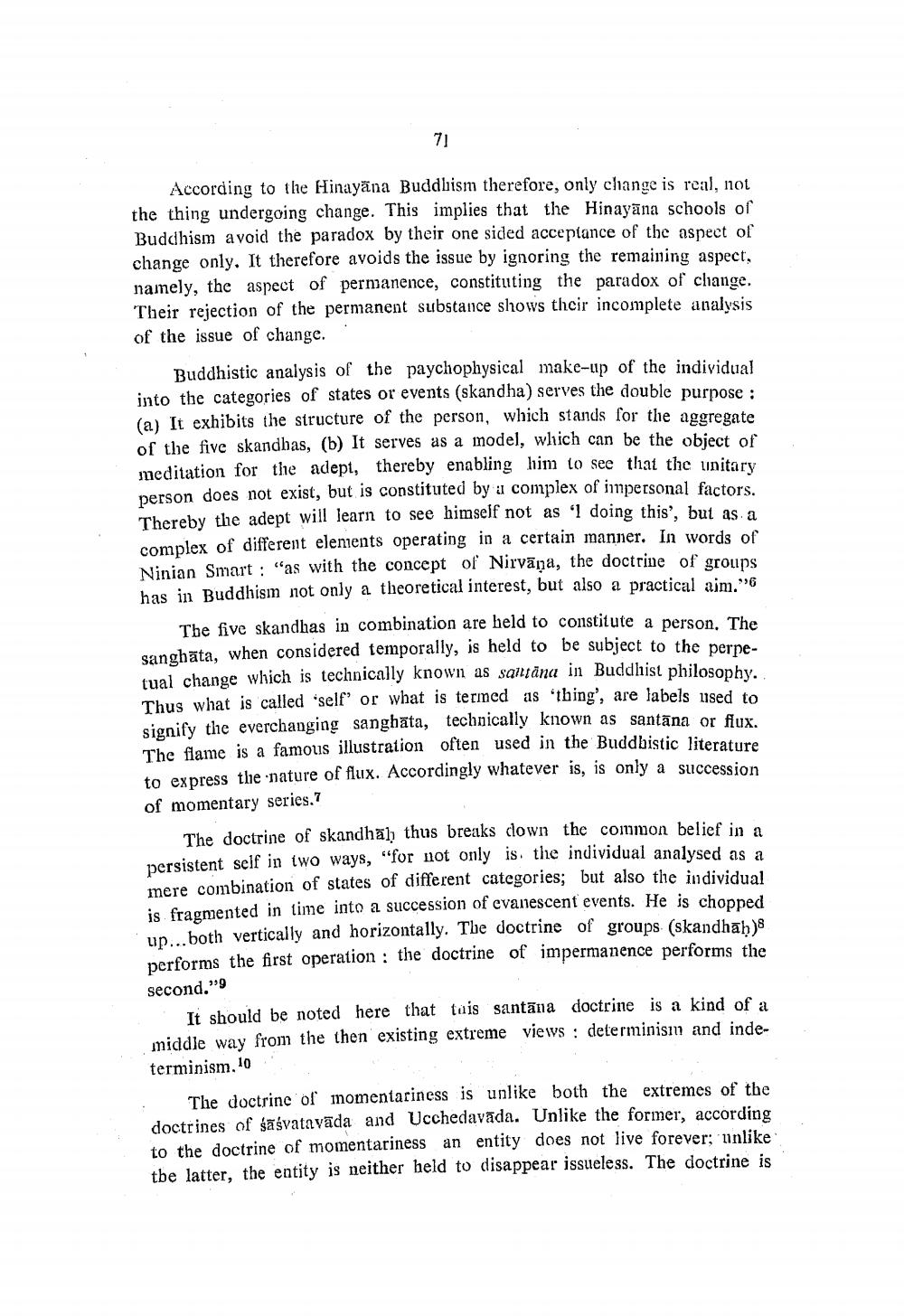________________
According to the Hinayāna Buddhism therefore, only change is real, not the thing undergoing change. This implies that the Hinayana schools of Buddhism avoid the paradox by their one sided acceptance of the aspect of change only. It therefore avoids the issue by ignoring the remaining aspect, namely, the aspect of permanence, constituting the paradox of change. Their rejection of the permanent substance shows their incomplete analysis of the issue of change.
Buddhistic analysis of the paychophysical make-up of the individual into the categories of states or events (skandha) serves the double purpose : (a) It exhibits the structure of the person, which stands for the aggregate of the five skandhas, (b) It serves as a model, which can be the obiect of meditation for the adept, thereby enabling him to see that the linitary person does not exist, but is constituted by a complex of impersonal factors. Thereby the adept will learn to see himself not as 'l doing this, but as a complex of different elenients operating in a certain manner. In words of Ninian Smart: "as with the concept of Nirvana, the doctrine of groups has in Buddhism not only a theoretical interest, but also a practical aim."6
The five skandhas in combination are held to constitute a person. The sanghāta, when considered temporally, is held to be subject to the perpe tual change which is technically known as santana in Buddhist philosophy Thus what is called self' or what is termed as "thing, are labels used to signify the everchanging sanghata, technically known as santāna or flux The flame is a famous illustration often used in the Buddhistic literature to express the nature of flux. Accordingly whatever is, is only a succession of momentary series.7
The doctrine of skandhäl thus breaks clown the common belief in a persistent self in two ways, "for not only is the individual analysed as a mere combination of states of different categories; but also the individual is fragmented in time into a succession of evanescent events. He is chopped up... both vertically and horizontally. The doctrine of groups (skandhab)8 performs the first operation : the doctrine of impermanence performs the second."9
It should be noted here that täis santāna doctrine is a kind of a middle way from the then existing extreme views : determinism and indeterminism. 10
The doctrine of momentariness is unlike both the extremes of the doctrines of sasvatavada and Ucchedavada. Unlike the former, according to the doctrine of momentariness an entity does not live forever; unlike tbe latter, the entity is neither held to disappear issueless. The doctrine is




